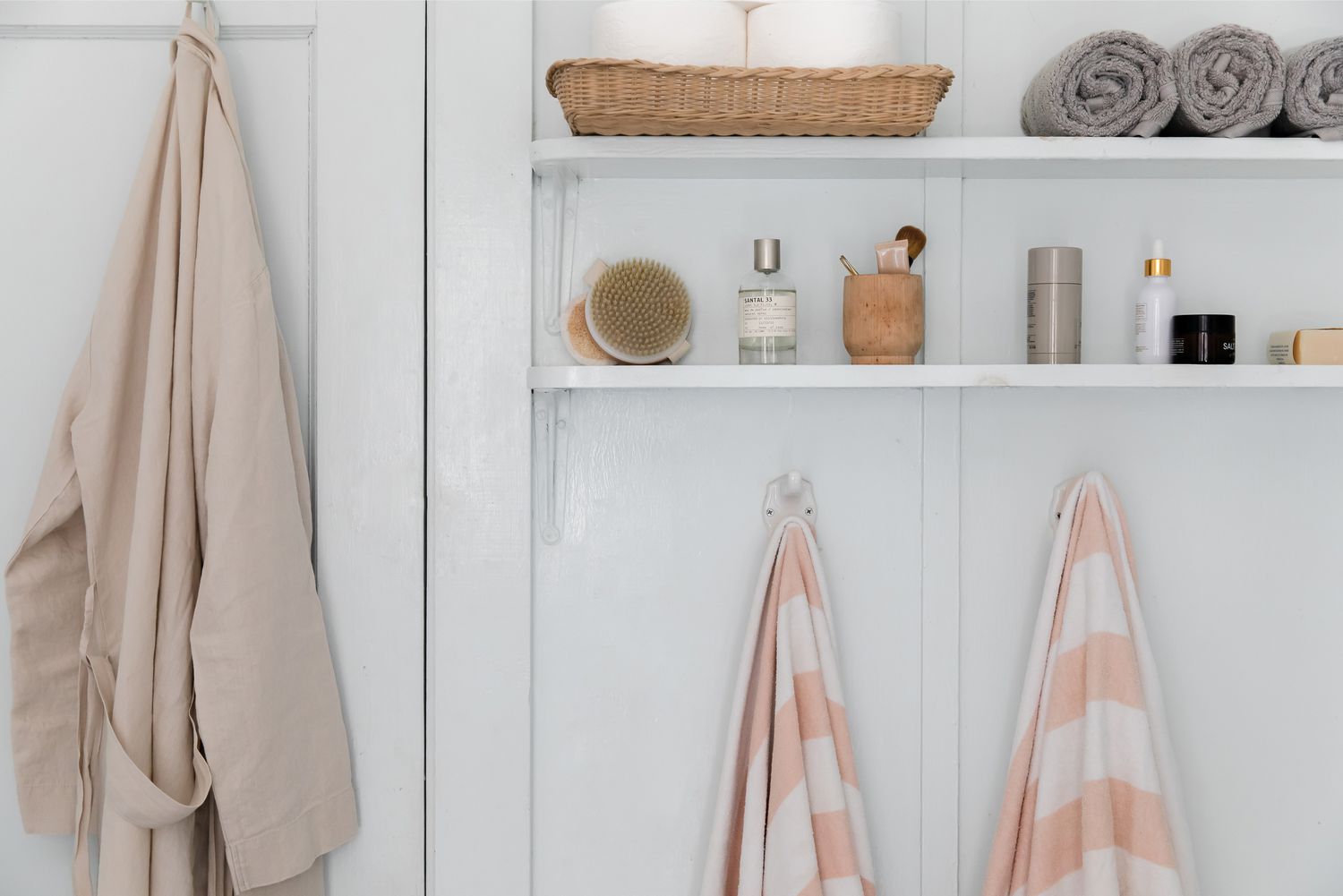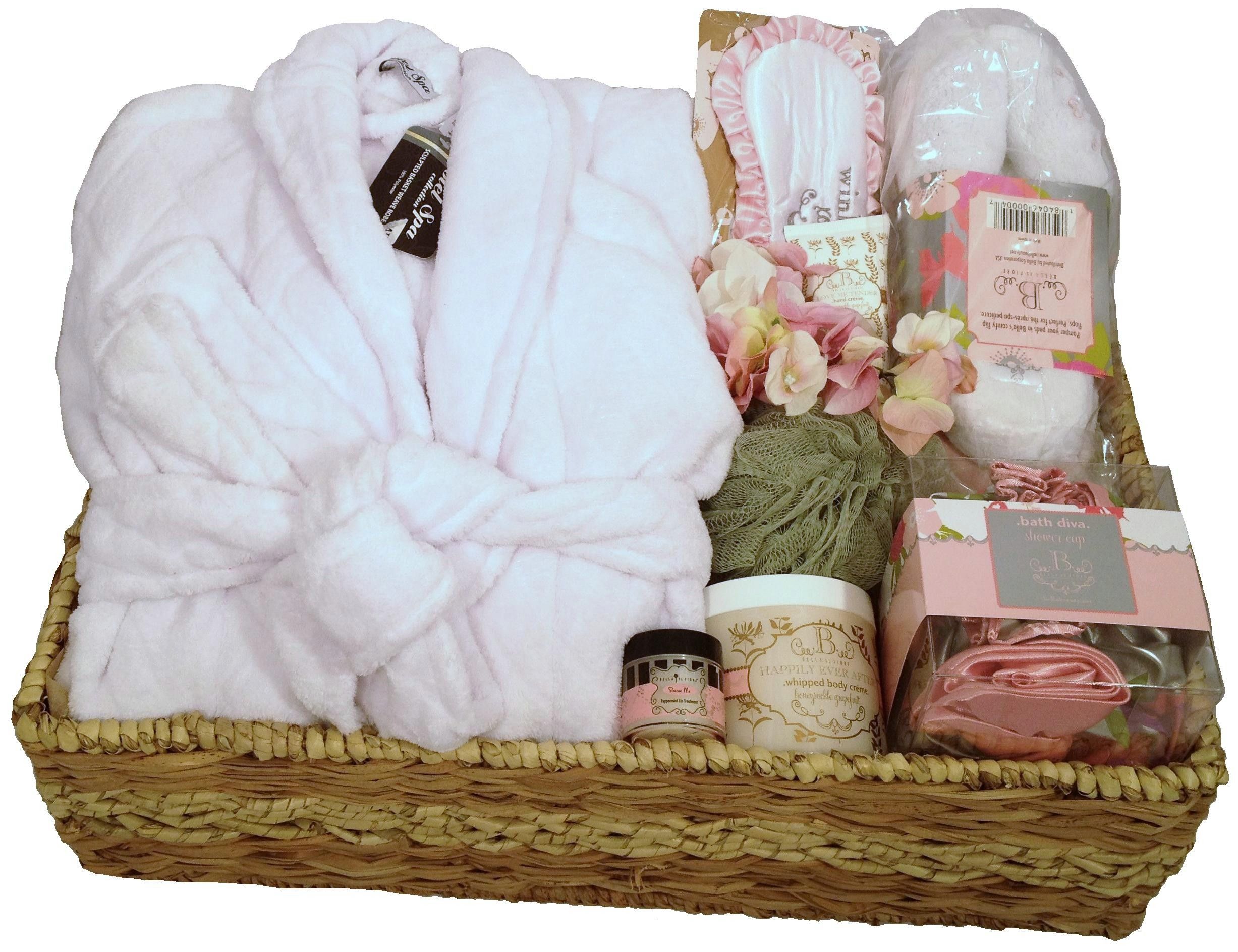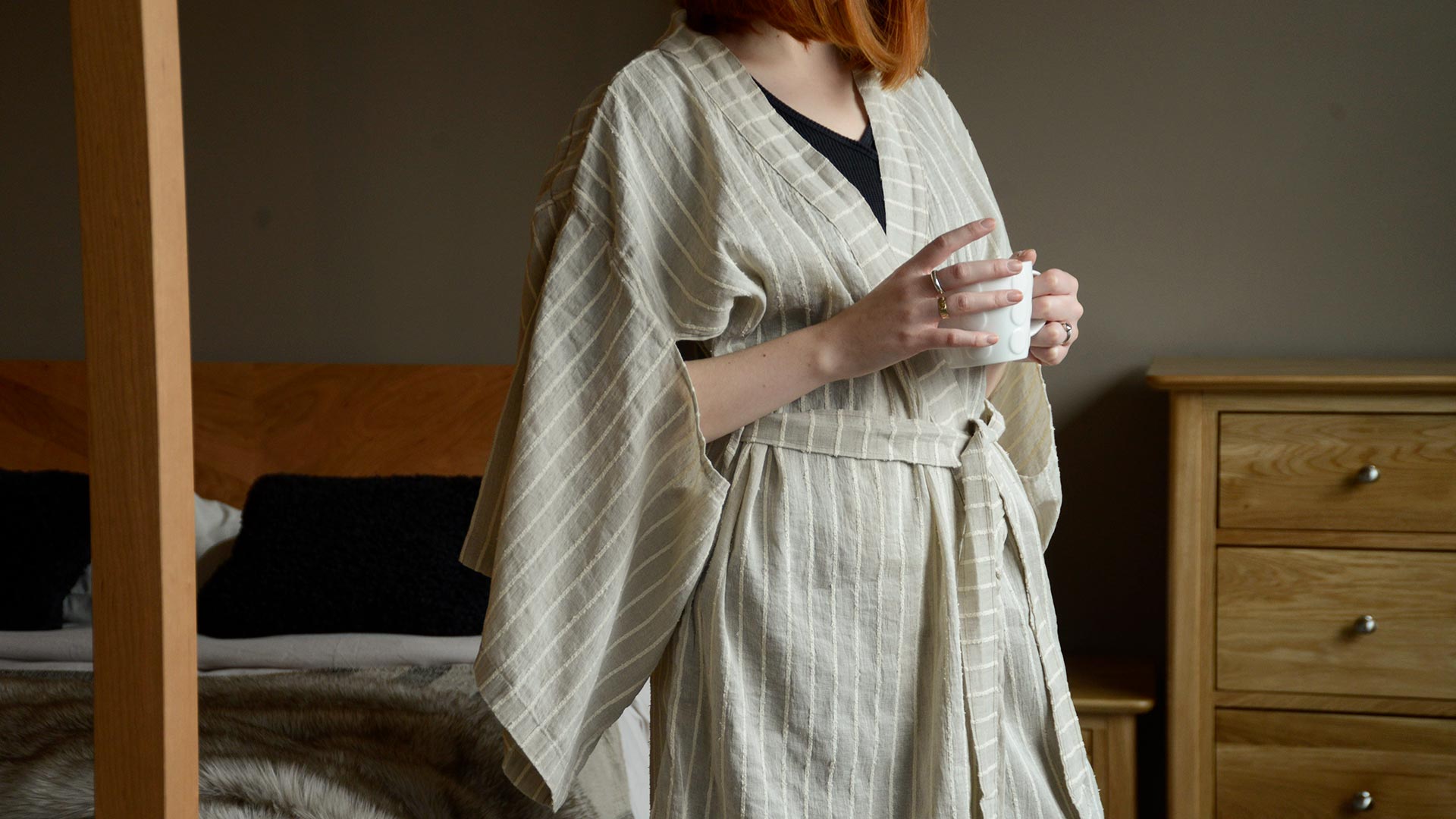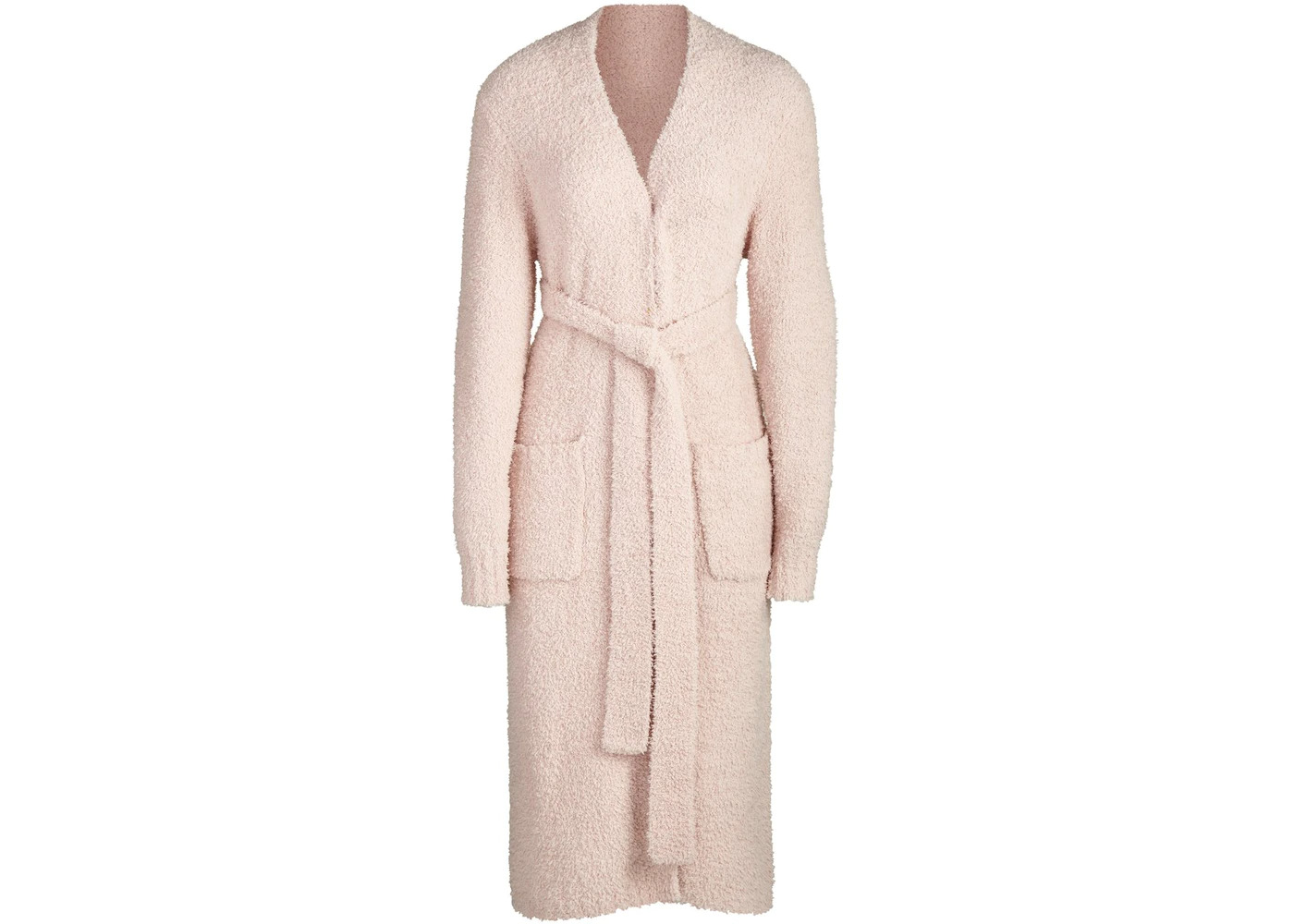

FAQs
How High To Hang A Robe Hook
Modified: July 30, 2023
Find answers to your general questions about how high to hang a robe hook. Learn the proper height for optimal functionality and convenience.
(Many of the links in this article redirect to a specific reviewed product. Your purchase of these products through affiliate links helps to generate commission for Under-tec.com, at no extra cost. Learn more)
Table of Contents
How High To Hang A Robe Hook
When it comes to hanging a robe hook, finding the perfect height is crucial for both functionality and aesthetics. Whether you’re installing one in your bathroom, bedroom, or entryway, knowing the proper height can make all the difference in ensuring convenience and visual appeal. In this article, we will explore the importance of properly hanging a robe hook and provide you with some guidelines to help you determine the ideal height for your specific needs.
Properly hanging a robe hook is essential for easy access and usability. If it’s hung too high, you might struggle to reach your robe, defeating the purpose of having a convenient storage spot. On the other hand, hanging it too low can make it look awkward and unbalanced. By finding the right height, you can create a functional and visually pleasing arrangement.
There are a few factors to consider when determining the height for your robe hook. First, think about who will be using it. If you have children or individuals with mobility issues in your household, you may want to hang the hook at a lower height to ensure accessibility for everyone. Additionally, consider the length of the robes you typically use. If you have long robes, you may need to hang the hook slightly higher to prevent them from dragging on the floor.
To assist you in determining the height, there are standard recommendations to follow. For bathrooms, a common rule of thumb is to hang the robe hook at a height of 60 inches (or 5 feet) above the finished floor. This provides a comfortable reach for most adults. In bedrooms, the height can vary depending on personal preference. Some prefer to hang it slightly higher, around 66 inches (or 5.5 feet), for a more refined and elevated look.
While standard recommendations can be a good starting point, it’s important to adjust the height based on your personal preference and specific circumstances. Take into account the height of the individuals using the robe hook, the overall design aesthetic of the room, and any other existing shelving or fixtures that may impact the placement.
There are various types of robe hooks available, such as single hooks, double hooks, and hooks with a shelf. The type you choose can also influence the height at which it should be hung. For instance, a hook with a shelf may need to be mounted slightly lower to provide enough clearance for larger items on the shelf. Consider the functionality and design of the hook when determining the height.
Lastly, keep in mind that different rooms may have different height recommendations. For example, in a bathroom, it’s important to consider the height of other fixtures, such as towel bars and mirrors. You want to ensure that the robe hook is proportionate and visually cohesive with the rest of the room’s elements. In bedrooms or entryways, you have more flexibility to experiment with the height based on the overall design aesthetic and practicality.
When it comes to DIY installation, there are a few tips and tricks to consider. Use a measuring tape to mark the desired height, and double-check the alignment with a level to ensure it’s straight. To prevent damage to the wall, use appropriate anchors and screws for secure mounting. If you’re unsure about DIY installation, it’s always a good idea to consult a professional for assistance.
To conclude, finding the right height for hanging a robe hook is crucial for ensuring functionality and visual appeal. Consider the users, robe length, and specific room requirements to determine the ideal height. Follow standard recommendations as a starting point, but don’t be afraid to adjust based on personal preference and circumstances. By carefully selecting and properly installing a robe hook, you can create a convenient and stylish storage solution that enhances the overall aesthetics of your space.
Introduction
A robe hook seems like a small and inconspicuous accessory, but its placement can greatly impact both the functionality and aesthetics of your space. Whether you’re hanging it in your bathroom, bedroom, or entryway, knowing how high to hang a robe hook is essential. The height at which you install it can determine how easily you can reach your robe and how visually pleasing the arrangement appears.
In this article, we will explore the importance of properly hanging a robe hook and provide you with guidelines to determine the ideal height. We’ll discuss standard height recommendations, factors to consider when adjusting for personal preference, different types of robe hooks, and tips for DIY installation. By understanding the significance of finding the right height and following best practices, you can create a functional and stylish storage solution for your robes.
Properly hanging a robe hook is more than just ensuring easy access to your robe; it can also enhance the overall aesthetics of your space. If it’s placed too high, you might struggle to reach your robe, defeating the purpose of having a convenient storage spot. Hanging it too low, on the other hand, can disrupt the balance and symmetry of the room. By finding the perfect height, you can strike a balance between functionality and visual appeal.
When determining the appropriate height for your robe hook, you need to consider several factors. Think about who will be using it and any specific accessibility needs. For example, if you have children or individuals with mobility issues in your household, you may want to adjust the height accordingly. Additionally, consider the length of the robes you typically use. If you have floor-length robes, you might need to hang the hook slightly higher to prevent them from dragging on the floor.
To assist you in determining the height, there are standard recommendations to follow. Bathrooms often have a common guideline that suggests hanging the robe hook at a height of 60 inches (or 5 feet) above the finished floor. This height allows most adults to comfortably reach their robe. However, in bedrooms, the ideal height may vary based on personal preference and design aesthetics.
While standard recommendations provide a good starting point, it’s important to adjust the height based on your specific circumstances. Personal preference is key in achieving a visually pleasing and functional placement. Consider the height of the individuals using the robe hook, the overall design aesthetic of the room, and any other fixtures or shelving that may affect the placement. With a little thought and consideration, you can find the perfect height for your robe hook.
Importance of Properly Hanging a Robe Hook
When it comes to hanging a robe hook, the importance of doing it properly should not be underestimated. It may seem like a small detail, but the placement of a robe hook can greatly impact both the functionality and aesthetics of your space. Here are some key reasons why it is essential to take the time to hang your robe hook correctly:
Convenience: Hanging your robe hook at the right height ensures easy access to your robes. You don’t want to have to stretch or strain just to reach your robe, especially when you’re in a hurry. By installing the hook at the proper height, you create a convenient storage solution that allows you to effortlessly grab your robe when you need it.
Organization: A well-placed robe hook helps to keep your space neat and tidy. Instead of leaving your robe lying around or draped over furniture, having a dedicated spot to hang it keeps things organized. By making use of a robe hook, you can maintain a clutter-free environment while ensuring your robe remains easily accessible.
Visual Appeal: Properly hanging a robe hook contributes to the overall aesthetics of your space. It creates a visually pleasing arrangement that adds a touch of elegance and sophistication. A robe hook placed too high or too low can disrupt the balance and harmony of the room. By finding the right height, you can achieve a clean and polished look that enhances the overall design aesthetic.
Protection: Hanging your robe on a hook prevents it from getting dirty or damaged. Keeping your robe off the floor or draped over furniture reduces the risk of it picking up dust, dirt, or pet hair. Additionally, hanging the robe helps maintain its shape and prevents wrinkles, allowing you to extend its lifespan and keep it looking its best.
Accessibility: Consider the needs of all individuals using the robe hook. If you have children or individuals with mobility issues in your household, hanging the hook at an appropriate height ensures that everyone can easily reach their robe. By taking accessibility into account, you create an inclusive environment that accommodates the needs of all users.
Enhanced Functionality: Properly hanging a robe hook improves its functionality. By placing it at the right height, you can ensure that the robe hangs freely without touching the floor or other surfaces. This prevents the robe from collecting dirt or being at risk of snagging on objects around it. With proper placement, you can maximize the functionality and convenience of your robe hook.
By understanding the importance of properly hanging a robe hook, you can create a functional and visually appealing storage solution for your robes. Consider convenience, organization, visual appeal, protection, accessibility, and enhanced functionality when determining the placement of your robe hook. By paying attention to this small detail, you can elevate the overall look and feel of your space while enjoying the convenience of easily accessible robes.
Factors to Consider
When determining the height at which to hang a robe hook, there are various factors to consider. Taking these factors into account will help you find the ideal placement that suits your specific needs and preferences. Here are some key factors to consider:
Users: Consider the individuals who will be using the robe hook. This includes their height and any physical limitations or mobility issues. If you have children in the household, you may want to hang the hook at a lower height to ensure they can easily reach their robe. Similarly, if you have elderly individuals with limited mobility, you may need to adjust the height accordingly to accommodate their needs.
Robe Length: Take into consideration the length of the robes you typically wear. If you have longer robes that reach the floor, you may want to hang the hook at a higher height to prevent them from dragging on the floor. Hanging the hook too low can result in your robe getting dirty or worn out quickly. Conversely, if you have shorter or mid-length robes, you may be able to hang the hook lower without any concerns.
Room Design: The overall design aesthetic of the room should also play a role in determining the height of the robe hook. Consider the style of the room and any existing fixtures or shelving. You want the robe hook to seamlessly blend in with the rest of the elements in the space. Hanging the hook too high or too low can disrupt the harmony of the room, so try to find a height that complements the design aesthetic.
Other Fixtures: Take into account any other fixtures or items in the room that may impact the placement of the robe hook. For example, if you’re installing the hook in a bathroom, consider the height of towel bars and other hanging accessories. You want to ensure that the robe hook is proportionate and visually cohesive with the rest of the elements. Adjust the height of the robe hook accordingly to create a harmonious arrangement.
Personal Preference: Ultimately, personal preference is a key factor in determining the height at which to hang a robe hook. While there are standard recommendations, it’s important to adjust the height based on what feels most comfortable and visually appealing to you. Stand in front of the empty wall space where you plan to hang the hook and visualize the height that suits your needs and complements the overall aesthetics of the room.
By considering these factors, you can determine the ideal height for hanging your robe hook. Keep in mind the users, robe length, room design, other fixtures, and your personal preference when deciding on the placement. By finding the perfect height, you can ensure that your robe hook is both functional and visually pleasing, adding convenience and style to your space.
Standard Height Recommendations
While personal preference plays a significant role in determining the height at which to hang a robe hook, there are some standard recommendations that can serve as a starting point. These guidelines can help you achieve a practical and visually appealing placement. Here are the standard height recommendations for hanging a robe hook:
Bathrooms: In bathrooms, a common guideline is to hang the robe hook at a height of 60 inches (or 5 feet) above the finished floor. This height provides a comfortable reach for most adults. It is important to consider the height of the individuals using the bathroom and adjust accordingly. If you have taller or shorter individuals in your household, you may need to raise or lower the hook to suit their needs.
Bedrooms: When it comes to hanging a robe hook in the bedroom, the standard height can vary based on personal preference and the overall design aesthetic of the room. Some individuals prefer to hang the hook slightly higher, around 66 inches (or 5.5 feet), for a more refined and elevated look. Others may choose to align it with the height recommended for bathrooms. Consider the style of your bedroom and the specific needs of the individuals using the hook to determine the ideal height.
It is important to note that these standard recommendations are not rigid rules. They serve as general guidelines and can be adjusted to suit your specific circumstances and personal preference. The height of your robe hook should ultimately be determined by factors such as the users, robe length, room design, and other fixtures.
When measuring and marking the height for your robe hook, use a measuring tape to ensure accuracy. Double-check the alignment with a level to ensure that the hook is straight. This attention to detail will help you achieve a professional and polished look.
It is also worth mentioning that different types of robe hooks may have specific requirements for installation. For example, hooks with a shelf may need to be mounted slightly lower to provide enough clearance for larger items on the shelf. Be sure to follow the manufacturer’s instructions and take the specific design of your robe hook into account when determining the height.
By considering the standard height recommendations as well as your personal needs and preferences, you can find the ideal placement for your robe hook. Remember to adjust the height based on the height of the individuals using it and the overall design aesthetic of the room. By finding the perfect height, you can ensure that your robe hook is both functional and visually pleasing, enhancing the convenience and style of your space.
Adjusting for Personal Preference
While standard height recommendations provide a helpful starting point, it is important to remember that personal preference plays a significant role in determining the height at which to hang a robe hook. Everyone has their own unique needs and aesthetic preferences, and adjusting the height accordingly can ensure that the robe hook is just right for you. Here are some key considerations when adjusting for personal preference:
Visual Appeal: Consider the overall design aesthetic of the room and the look you want to achieve. Adjusting the height of the robe hook can impact the visual balance and harmony of the space. Some individuals prefer a lower placement for a more casual and relaxed look, while others prefer a higher placement for a more refined and elegant appearance. Trust your instincts and choose a height that aligns with your desired visual aesthetic.
Convenience: Think about your own comfort and convenience when adjusting the height of the robe hook. If you are taller or have mobility issues, you may want to hang the hook slightly higher for easier accessibility. Conversely, if you are shorter or have difficulty reaching higher heights, you may prefer a lower placement that allows you to easily grab your robe without straining. Ultimately, adjusting the height based on your own comfort levels will enhance the functionality of the robe hook.
User’s Height: Take into consideration the height of the individuals who will be using the robe hook. If you share a bathroom or bedroom with family members or roommates of different heights, it can be helpful to find a height that accommodates everyone’s needs. Taking the time to install the hook at a height that suits each user’s comfort level will ensure that everyone can conveniently access their robes.
Existing Fixtures and Shelving: Analyze the placement of other fixtures and any existing shelving in the room. You want the robe hook to be visually cohesive and proportional to the rest of the elements. Adjust the height to create a harmonious arrangement that complements the surrounding fixtures and adds to the overall design of the space.
Remember that personal preference may vary depending on the room. While you may prefer a higher placement in your bedroom to achieve a specific design aesthetic, you may opt for a lower placement in your bathroom for easier access. Consider the unique requirements of each room and adjust the height accordingly.
When adjusting for personal preference, it is essential to measure carefully and mark the height accurately. Using a measuring tape and a level will help ensure precise and even positioning. Pay attention to details to achieve a professional and polished installation.
By adjusting the height of the robe hook to match your personal preference, you can create a customized storage solution that enhances both functionality and visual appeal. Trust your instincts, consider your comfort levels, and choose a height that aligns with your individual needs and design preferences. With a personalized approach, you can truly make your robe hook placement your own.
Different Types of Robe Hooks
When it comes to robe hooks, there are various types available, each with its own unique design and functionality. Understanding the different types of robe hooks can help you select the one that best suits your needs and complements the style of your space. Here are some popular types of robe hooks:
Single Hooks: Single hooks are the most common type of robe hooks. They consist of a single protruding hook that allows you to hang one robe or towel. Single hooks are simple, compact, and versatile, making them suitable for various rooms in your home. They are available in a wide range of materials, finishes, and designs, allowing you to find one that matches your personal style.
Double Hooks: Double hooks feature two separate hooks attached to a single base. These hooks provide additional hanging space, making them ideal for shared bathrooms or for individuals with multiple robes or towels. Double hooks are a practical choice if you have limited wall space, as they allow you to maximize the number of items you can hang.
Hooks with Shelf: Hooks with shelves combine functionality and style. These hooks feature a shelf or ledge on top of the hook, providing you with extra storage space for small items such as keys, toiletries, or decorative accents. Hooks with shelves are great for entryways, bathrooms, or bedrooms where you need both hanging space and a surface for storing or displaying items.
Decorative Hooks: If you’re looking to add a touch of elegance and flair to your space, decorative hooks are an excellent choice. These hooks come in various intricate designs and decorative finishes, such as ornate scrollwork or vintage-inspired motifs. Decorative hooks not only serve as functional storage solutions but also serve as decorative accents that enhance the overall aesthetic of your room.
Magnetic Hooks: Magnetic robe hooks offer a unique and innovative way to hang your robes. These hooks utilize strong magnets to adhere to metal surfaces, eliminating the need for drilling or mounting hardware. Magnetic hooks are ideal for those who want the convenience of a robe hook without the hassle of installation. They work well in bathrooms, lockers, or any metal surfaces where you need a temporary hanging solution.
When choosing a robe hook, consider the specific needs of your space and the functionality you require. Think about the number of robes or towels you need to hang and whether you need additional storage or decorative features. Also, consider the overall design of the room and choose a hook that complements the existing décor.
Whichever type of robe hook you choose, ensure that it is made of durable and sturdy materials to withstand the weight of your robes. Whether you prefer a minimalist single hook or a decorative hook that adds a touch of glamour, the right robe hook can not only provide convenience but also enhance the style and functionality of your space.
Hanging Robe Hooks in Different Rooms
Robe hooks are versatile storage solutions that can be utilized in various rooms throughout your home. The proper placement of robe hooks in different rooms can optimize convenience and organization. Here are some considerations for hanging robe hooks in different rooms:
Bathrooms: Bathrooms are a common location for robe hooks. One popular approach is to place a robe hook on the back of the bathroom door, allowing easy access to your robe after showering or bathing. Another option is to install a row of robe hooks on the wall near the shower or bathtub, providing hanging space for multiple robes or towels. For bathrooms shared by multiple people, consider hanging individual hooks for each person to ensure everyone has their own designated space.
Bedrooms: In bedrooms, robe hooks can serve as convenient storage for dressing gowns, robes, or even scarves and hats. Consider placing a robe hook near your closet or wardrobe for easy access to your robe when getting dressed. Hanging a robe hook on the back of the bedroom door is another practical solution, providing a space-saving option that keeps your robe within reach while maintaining a clean and tidy appearance.
Entryways: Entryways can benefit from robe hooks as a convenient place to hang coats, jackets, or even handbags. Installing multiple hooks aligned vertically or horizontally near the front door allows easy organization and quick access as you come and go. Consider the height of the hooks, ensuring that they are easily reachable for both adults and children, as well as the weight capacity of the hooks based on the items you plan to hang.
Mudrooms: Mudrooms are often high-traffic areas where outerwear or damp items such as raincoats, umbrellas, or wet boots are stored. Robe hooks can be an excellent solution for organizing and drying these items. Install multiple hooks at different heights to accommodate various items and create a functional and well-organized space. Consider using hooks with a shelf to provide additional storage space for hats, gloves, or small accessories.
Laundry Rooms: Laundry rooms can benefit from robe hooks for hanging clothing that needs to air dry or items that require immediate attention. Install a row of hooks on a wall or the back of a door to hang delicates, freshly ironed clothes, or items that have just been taken out of the dryer. This keeps them wrinkle-free and readily accessible until they can be properly stored or worn.
Remember to consider the specific needs and design aesthetics of each room when determining where to hang your robe hooks. Pay attention to factors such as available wall space, the height at which the hooks will be installed, the weight capacity of the hooks, and any existing fixtures or furniture that may impact the placement. With careful consideration, you can optimize the functionality and organization of each room with strategically placed robe hooks.
DIY Tips for Hanging a Robe Hook
If you’re considering installing a robe hook yourself, there are a few DIY tips to keep in mind. Following these guidelines will help ensure a successful and secure installation. Here are some helpful tips to help you hang a robe hook:
Choose the Right Location: Before beginning the installation process, carefully choose the location for your robe hook. Consider the height, accessibility, and usability of the spot. Take into account the factors discussed earlier, such as the users, robe length, and other fixtures in the room. Make sure the location is both practical and visually appealing.
Measure and Mark: Use a measuring tape to determine the desired height for your robe hook. Mark the spot with a pencil or masking tape. Use a level to ensure that the hook will be straight. This attention to detail will result in a professional-looking and visually pleasing installation.
Prep the Wall: If the wall surface is smooth and flat, you can proceed to mount the hook directly onto the wall. However, if the wall surface is uneven or textured, it is recommended to use a wall anchor to ensure stability. Consider the weight capacity of the robe hook and choose an appropriate anchor to support the load.
Drilling and Anchoring: If drilling is required, use an appropriate-sized drill bit to create a hole in the marked location. Insert the wall anchor into the hole and tap it gently with a hammer until it is flush with the wall surface. Then, screw the robe hook onto the anchor or directly into the wall, depending on the type of hook you have. Use a screwdriver or drill with the appropriate driver attachment to ensure a secure fit.
Test Stability: Once the hook is securely mounted, give it a gentle tug to ensure that it is properly anchored and will remain in place. If the hook feels wobbly or unstable, it may need additional reinforcement. Consider using a larger anchor or wall plug for added stability.
Consider Weight Capacity: Each robe hook has its own weight capacity. Make sure to check the manufacturer’s guidelines for the maximum weight it can support. Avoid overloading the hook, as this can cause damage to the wall or the hook itself. If you need to hang heavier items, consider using multiple hooks or finding alternative solutions such as wall-mounted racks or shelves.
Finishing Touches: Once the hook is securely installed, remove any pencil marks or masking tape. Clean the hook and the surrounding area to remove any dust or debris. Step back and admire your work, appreciating the functional and aesthetic value that the robe hook adds to your space.
If you are unsure about the installation process or have any concerns about your DIY abilities, it is always a good idea to consult a professional for assistance. They can ensure that the robe hook is properly installed and securely mounted.
By following these DIY tips, you can successfully install a robe hook and enjoy the convenience and organization it brings to your space. Remember to choose the right location, measure and mark carefully, prep the wall surface, use appropriate anchors, test the stability, consider weight capacity, and take pride in your finished installation. With a little effort and attention to detail, you can achieve a secure and aesthetically pleasing robe hook installation.
Conclusion
Hanging a robe hook may seem like a trivial task, but it has a significant impact on both the functionality and aesthetics of your space. By taking the time to properly hang a robe hook, you can ensure easy access to your robe and enhance the overall organization and visual appeal of the room.
Consider factors such as the users, robe length, room design, and personal preference when determining the ideal height for your robe hook. While there are standard recommendations to follow as a starting point, it is important to adjust the height based on your specific needs and design aesthetic.
There are various types of robe hooks available, from single hooks to double hooks, hooks with shelves, decorative hooks, and magnetic hooks. Consider the functionality and style of each type to choose the one that best suits your space and storage requirements.
Robe hooks can be successfully installed as versatile storage solutions in different rooms such as bathrooms, bedrooms, entryways, mudrooms, and laundry rooms. By strategically placing robe hooks, you can optimize convenience and organization in each space.
If you decide to take on the task of hanging a robe hook yourself, follow the DIY tips provided to ensure a secure and successful installation. From choosing the right location and measuring carefully to using appropriate anchors and testing stability, these tips will guide you in achieving a professional and visually pleasing result.
In conclusion, hanging a robe hook at the ideal height and in the right location is not only about practicality but also about enhancing the style and functionality of your space. By considering the specific needs of each room, your personal preference, and following the proper installation techniques, you can enjoy the convenience and organization that a robe hook provides. Take the time to find the perfect spot and enjoy the benefits of a well-placed robe hook in your daily routine.










